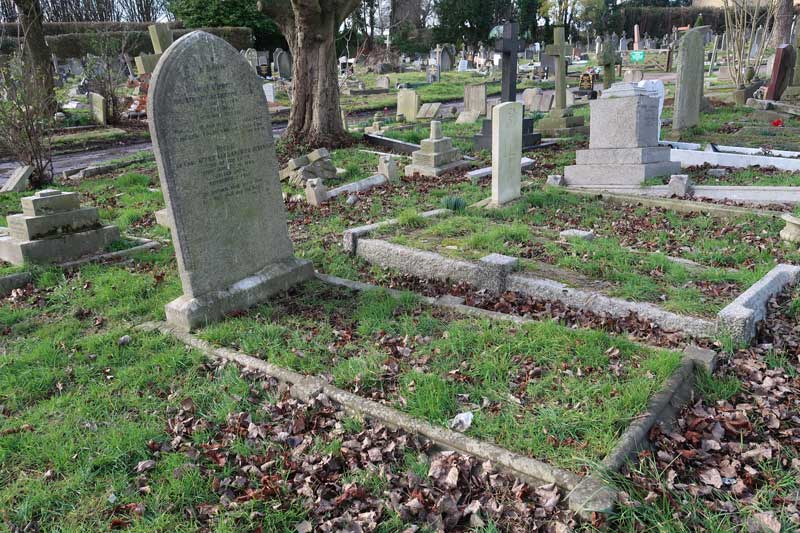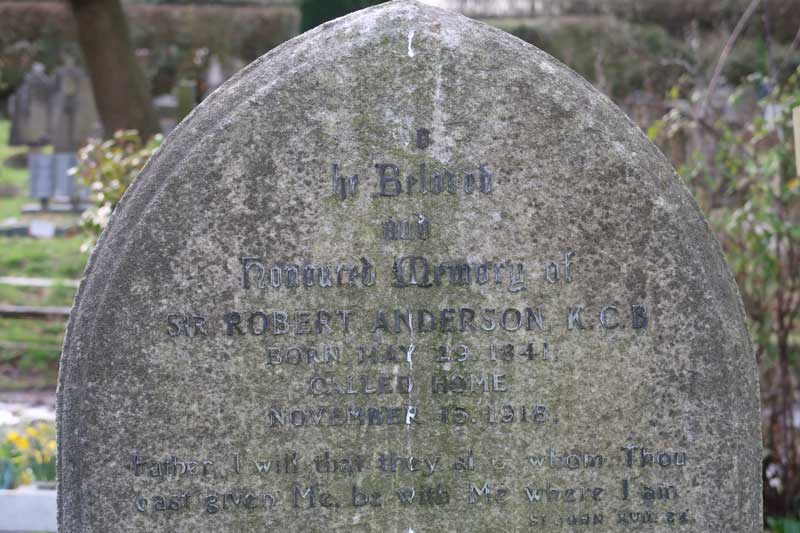As the Assistant Commissioner and the head of the Criminal Investigation Department (CID), Dr Robert Anderson (1841 – 1918) was the highest ranking police official with direct responsibility for the Jack the Ripper investigation, and this put him in the position of knowing more about the direction that the case was taking, as well as the evidence against the major suspects, than almost any other officer.
He remained the head of CID and the Assistant Commissioner until his retirement in 1901, after which he was knighted and became Sir Robert Anderson.

THE LIGHTER SIDE OF MY OFFICIAL LIFE
Following his retirement, Anderson did what quite a few of his colleagues chose to do in their twilight years. he took up the pen and became an author.
In 1910, he published his memoirs under the title “The Lighter Side Of My Official Life”, and, in those memoirs, he made the following oft-quoted statement, which is believed to relate to Jack the Ripper suspect Aaron Kosminski:-
“…undiscovered murders are rare in London, and the “Jack-the-Ripper” crimes are not in that category…I will merely add that the only person who had ever had a good view of the murderer unhesitatingly identified the suspect the instant he was confronted with him; but he refused to give evidence against him…In saying that he was a Polish Jew I am merely stating a definitely ascertained fact…”
RELIGION, CHARITY AND HEALTH-GIVING VACATIONS
In his retirement years, Anderson and his wife, Lady Agnes Anderson, devoted much of their time to religious and charitable endeavours, whilst Sir Robert also devoted himself to his writing career.
The couple also enjoyed frequent visits to St Leonards-on-Sea, Hastings, a resort about which Sir Robert Anderson, according to a report that appeared in The Hastings and St Leonard’s Observer on Saturday, 23rd November, 1918, “never tired of praising the charming and health-giving atmosphere.”
THE DEATH OF ANDERSON
In early November, 1918 Anderson, who was then seventy-seven years of age, succumbed to influenza.
Initially, he appeared to be recovering from his malady.
But then, on 15th November, 1918, his condition suddenly deteriorated, and he died that day from heart failure.
The Western Daily Press, published the following obituary and summary of his career in its edition of Tuesday, 19th November, 1918:-
“The sudden death is announced of Sir Robert Anderson.
HIS LIFE AND CAREER
He was born in Dublin on May 29, 1841, the son of Mr Matthew Anderson, who at that time held the office of Crown Solicitor in Dublin.
In 1865 while still a very junior barrister, Sir Robert became familiar with the confidential reports and secret information which had led the Irish Government to arrest the persons charged with treason-felony at the State trials of that year; and, in 1866 he was requested by the authorities to prepare for the information of Lord Naas, new Chief Secretary, a ‘precis’ of all the secret documents relating to this subject accumulated at Dublin Castle.
His special knowledge of the ways of Irish political conspiracy became known in high official circles, not only in Dublin but in London.
HIS ARRIVAL IN LONDON
After the famous Clerkenwell explosion in December, 1867, he was requested to take charge of Irish business at the Home Office.
In this capacity, he had a good deal to do with the surveillance of the Fenian conspirators – Irish and American-Irish – whose plots gave some anxiety to Government in 1869 and 1870.
In 1880 there was a recrudescence of Irish plotting, and Anderson was invited by Sir W. Harcourt, the Home Secretary in the Gladstone Ministry then in office, to help in dealing with it.
He consented with a reluctance, which was much increased by the events that followed the murder of Lord Frederick Cavendish and Burke.
This crime, Anderson, in one of his volumes of “Recollections” declares was “an event of no special significance,” and, in fact, a “mere accident.”
It led, however, to Anderson’s appointment to represent in London the Irish Department for Police and Crime, in which capacity he conducted an active campaign against the Fenian dynamiters.
HEAD OF THE CID
In 1888, he became the head of the Criminal Investigation Department.
At the very outset of his discharge of his new duties, there occurred the “Jack the Ripper” crimes, concerning which he definitely states in the volume already quoted, that they were perpetrated by a Polish Jew, whose identity was known to the police, though they could not obtain the evidence necessary for his conviction.
He continued to direct the Criminal Investigation Department with great ability until 1901, when he finally retired from the public service.
Since his retirement, on which he was created a K.C.B., Sir Robert was industrious in authorship.”
HIS FUNERAL AND BURIAL
The funeral service for Sir Robert Anderson was held at Trinity Presbyterian Church, Kensington Park Road, on 22nd November, 1918, following which he was laid to rest in Kensal Green Cemetery.

DIRECTIONS FOR VISITING HIS GRAVE
Should you wish to visit his grave, you will need to make your way, via the Bakerloo Line, to Kensal Green Underground Station.
On exiting the station, turn left along College Road and, on arrival at the traffic lights, turn right along Harrow Road, and immediately cross it via the traffic lights crossing.
Turn right on the other side and walk along Harrow Road, passing the Masons Arms pub and the bus stop.
A little further along, on the left, by the line of black posts, go left through the gates of Kensal Green Cemetery, All Souls.
Keep ahead along that path to follow it as it bends left, and, just past the red and white barrier, go in through the gates of the cemetery.
Keep straight ahead, passing several large tombs that more resemble bungalows than burial places, and when the path divides at the very end, take the right path, following the arrow for the “Crematorium & Car Park.”
Go first right, following the signpost for the Crematorium, and, on arrival at a crossroads, turn left along an earth path, follow it as it swings right and, just after a large white cross on your left, look out for the black marble grave of IsahakKeshishian on the left, and at that point turn left to pass to the right of the grave, to arrive on a grass path.
Keep ahead along the grass path, passing the kneeling figure with her head in her hands, and a little further along, on the right, you will arrive at the grave of Sir Robert Anderson.

SOMEWHAT WEATHERWORN
The inscription is somewhat worn by time and weather, but, nonetheless, you can make out his name on the tombstone, together with that of his wife, “The Lady Agnes Alexandrina Anderson”, who was “called home” on November 7th, 1925.

WORTH EXPLORING THE REST OF THE CEMETERY
Since you will have taken the trouble of travelling out to Kensal Green Cemetery, you might wish to remain for a few hours and visit the graves of many of the famous Victorians who lie buried here.
Famous names include novelists, Wilkie Collins, William Makepeace Thackeray and Anthony Trollope. You can also visit the graves of the tightrope walker Charles Blondin; and Charles Dickens beloved sister-in-law, Mary Hogarth, whose gravestone epitaph was actually composed by Dickens himself.
If you would like to explore the cemetery we have a full self-guided walking tour on this page.
